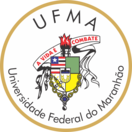| Compartilhamento |


|
Use este identificador para citar ou linkar para este item:
https://tedebc.ufma.br/jspui/handle/tede/3943Registro completo de metadados
| Campo DC | Valor | Idioma |
|---|---|---|
| dc.creator | BORGES, Ronaldo Rodrigues | - |
| dc.creator.Lattes | http://lattes.cnpq.br/0820274439263961 | por |
| dc.contributor.advisor1 | CABIDO, Christian Emmanuel Torres | - |
| dc.contributor.advisor1Lattes | http://lattes.cnpq.br/9102119601757395 | por |
| dc.contributor.referee1 | CABIDO, Christian Emmanuel Torres | - |
| dc.contributor.referee1Lattes | http://lattes.cnpq.br/9102119601757395 | por |
| dc.contributor.referee2 | RODRIGUES, Sara Andrade | - |
| dc.contributor.referee2Lattes | http://lattes.cnpq.br/4222056246129201 | por |
| dc.contributor.referee3 | VENEROSO, Christiano Eduardo | - |
| dc.contributor.referee3Lattes | http://lattes.cnpq.br/0537304422291084 | por |
| dc.contributor.referee4 | MOSTARDA, Cristiano Teixeira | - |
| dc.contributor.referee4Lattes | http://lattes.cnpq.br/7154897694896564 | por |
| dc.date.accessioned | 2022-08-11T10:41:02Z | - |
| dc.date.issued | 2021-03-09 | - |
| dc.identifier.citation | BORGES, Ronaldo Rodrigues. Efetividade da prescrição de caminhada não supervisionada, orientada com diferentes durações semanais, sobre os desempenhos de marcha e mobilidade funcional de indivíduos com acidente vascular encefálico (AVE) crônico: Um ensaio clínico randomizado. 2021. 86 f. Dissertação( Programa de Pós-Graduação em Educação Física) - Universidade Federal do Maranhão, São Luís, 2021. | por |
| dc.identifier.uri | https://tedebc.ufma.br/jspui/handle/tede/3943 | - |
| dc.description.resumo | Introdução: A maioria dos estudos que investigam os efeitos da caminhada para pacientes pós Acidente Vascular Encefálico (AVE) têm utilizado 150 minutos como tempo de intervenção, apesar da literatura sugerir que os ganhos motores aumentam com a realização de maiores volumes, e das diretrizes recomendarem durações semanais de treinamento variadas. Entretanto, apesar de eficazes, estes protocolos, por demandarem de supervisão profissional próxima e/ou de equipamentos específicos para a prática, nem sempre são viáveis de serem mantidos após o término dos programas de reabilitação. Neste sentido, a efetividade da prescrição de treinamentos de caminhada que possam ser executados em solo, de forma não supervisionada e com diferentes durações semanais recomendadas para AVE, ainda é desconhecida. Objetivo: Comparar a efetividade da prescrição de caminhada não supervisionada, orientada com 150 ou 300 minutos semanais, sobre desempenhos de marcha e mobilidade funcional de indivíduos com AVE crônico. Métodos: Trata-se de um ensaio clínico randomizado no qual, após admissão clínica e testes iniciais, 40 indivíduos com AVE crônico receberam a prescrição de caminhada não supervisionada com duração semanal de 150 (G150) ou 300 minutos (G300). O período e treinamento não supervisionado foi de oito semanas, com avaliações no início e no final (PRÉ e PÓS). Variáveis primárias avaliadas: velocidade confortável (VCONF) de marcha por meio do teste de 10 metros (T10), a distância percorrida no teste de caminhada de seis minutos (TC6) e a mobilidade funcional pelo tempo no teste Timed Up and Go (TUG); como variáveis secundárias foram avaliados o tempo para execução do teste de sentar e levantar cinco vezes (TSL5) e a velocidade máxima de (VMÁX), também pelo T10. Estatística: Utilizou-se o Generalized Estimating Equations (GEE) para comparação das variáveis em função do tempo (PRÉ e PÓS) e dos grupos (G150 e G300) e foi calculado o tamanho de efeito clínico (TDE) pelo d de Cohen; p<0,05. Resultados: Não houve diferença entre os grupos, sendo apenas o fator tempo determinante para melhora de todas as variáveis avaliadas (p<0,001), resultando em TDE grande para VCONF, médio para VMÁX e TSL5 e pequeno para TUG e TC6. Conclusão: A prescrição de caminhada não supervisionada foi efetiva para melhorar a marcha e a mobilidade funcional de indivíduos com AVE, sem diferença entre durações semanais orientadas. Portanto, caminhar 150 minutos por semana pode ser suficiente. | por |
| dc.description.abstract | Introduction: Despite the motor gains after the Stroke increase with greater volumes, and the guidelines allow the recommendation of varying weekly training durations, most studies with walking intervention use 150 minutes. However, although effective, these protocols, as they require close professional supervision and / or specific equipment for the practice, are not always feasible to be taken after the end of the recovery programs. In this sense, the effectiveness of the prescription of walking training that can be obtained on the ground, in an unsupervised manner and with different weekly durations recommended for stroke, is still unknown. Objective: To compare the effectiveness of the prescription of unsupervised walking, oriented with 150 or 300 minutes per week, in the gait and functional mobility of individuals with chronic stroke. Methods: This is a randomized clinical trial in which, after clinical admission and initial tests, 40 individuals with chronic stroke received the prescription of unsupervised walking with a weekly duration of 150 (G150) or 300 minutes (G300). The period and unsupervised training was eight weeks, with evaluations at the beginning and at the end (PRE and POST). Primary variables evaluated: comfortable gait speed (CGS) using the 10-meter walk test (10MWT), the distance covered in the six-minute walk test (6MWT) and functional mobility over time in the Timed Up and Go (TUG) test; as secondary variables, the time to perform the Five Times Sit-To-Stand Test (FTSTST) and the Fast Gait Speed were evaluated, also by 10MWT. Statistics: Generalized Estimating Equations (GEE) was used to compare variables as a function of time (PRE and POST) and groups (G150 and G300) and the clinical effect size (ES) was calculated using Cohen's d; p <0.05. Results: There was no difference between the groups, being only the determining time factor for the improvement of all evaluated variables (p <0.001), resulting in a large ES for CGS, medium for Fast Gait Speed and FTSTST and small for TUG and 6MWT. Conclusion: The prescription of unsupervised walking was effective in improving the gait and functional mobility of individuals with stroke, with no difference between oriented weekly durations. Therefore, walking 150 minutes a week may be sufficient. | eng |
| dc.description.provenance | Submitted by Maria Aparecida (cidazen@gmail.com) on 2022-08-11T10:41:02Z No. of bitstreams: 1 Ronaldo Rodrigues Borges.pdf: 20509067 bytes, checksum: 54275c06a2cdd09f9da8271292d83ea3 (MD5) | eng |
| dc.description.provenance | Made available in DSpace on 2022-08-11T10:41:02Z (GMT). No. of bitstreams: 1 Ronaldo Rodrigues Borges.pdf: 20509067 bytes, checksum: 54275c06a2cdd09f9da8271292d83ea3 (MD5) Previous issue date: 2021-03-09 | eng |
| dc.format | application/pdf | * |
| dc.language | por | por |
| dc.publisher | Universidade Federal do Maranhão | por |
| dc.publisher.department | DEPARTAMENTO DE EDUCAÇÃO FÍSICA/CCBS | por |
| dc.publisher.country | Brasil | por |
| dc.publisher.initials | UFMA | por |
| dc.publisher.program | PROGRAMA DE PÓS-GRADUACAO EM EDUCAÇÃO FÍSICA | por |
| dc.rights | Acesso Aberto | por |
| dc.subject | Acidente Vascular Encefálico; | por |
| dc.subject | prescrição; | por |
| dc.subject | caminhada; | por |
| dc.subject | marcha; | por |
| dc.subject | mobilidade funcional; | por |
| dc.subject | duração da terapia | por |
| dc.subject | Stroke; | eng |
| dc.subject | prescription; | eng |
| dc.subject | walking; | eng |
| dc.subject | gait; | eng |
| dc.subject | functional mobility; | eng |
| dc.subject | duration of therapy | eng |
| dc.subject.cnpq | Educação Física | por |
| dc.title | EFETIVIDADE DA PRESCRIÇÃO DE CAMINHADA NÃO SUPERVISIONADA, ORIENTADA COM DIFERENTES DURAÇÕES SEMANAIS, SOBRE OS DESEMPENHOS DE MARCHA E MOBILIDADE FUNCIONAL DE INDIVÍDUOS COM ACIDENTE VASCULAR ENCEFÁLICO (AVE) CRÔNICO: UM ENSAIO CLÍNICO RANDOMIZADO | por |
| dc.title.alternative | EFFECTIVENESS OF UNSUPERVISED WALKING PRESCRIPTION, ORIENTED WITH DIFFERENT WEEK DURATIONS, ABOUT THE GAIT PERFORMANCE AND FUNCTIONAL MOBILITY OF INDIVIDUALS WITH CHRONIC BRAIN VASCULAR ACCIDENT (CVA): AN ESSAY CLINICAL RANDOMIZED | eng |
| dc.type | Dissertação | por |
| Aparece nas coleções: | DISSERTAÇÃO DE MESTRADO - PROGRAMA DE PÓS-GRADUAÇÃO EM EDUCAÇÃO FÍSICA | |
Arquivos associados a este item:
| Arquivo | Descrição | Tamanho | Formato | |
|---|---|---|---|---|
| Ronaldo Rodrigues Borges.pdf | Dissertação de Mestrado | 20,03 MB | Adobe PDF | Baixar/Abrir Pré-Visualizar |
Os itens no repositório estão protegidos por copyright, com todos os direitos reservados, salvo quando é indicado o contrário.




